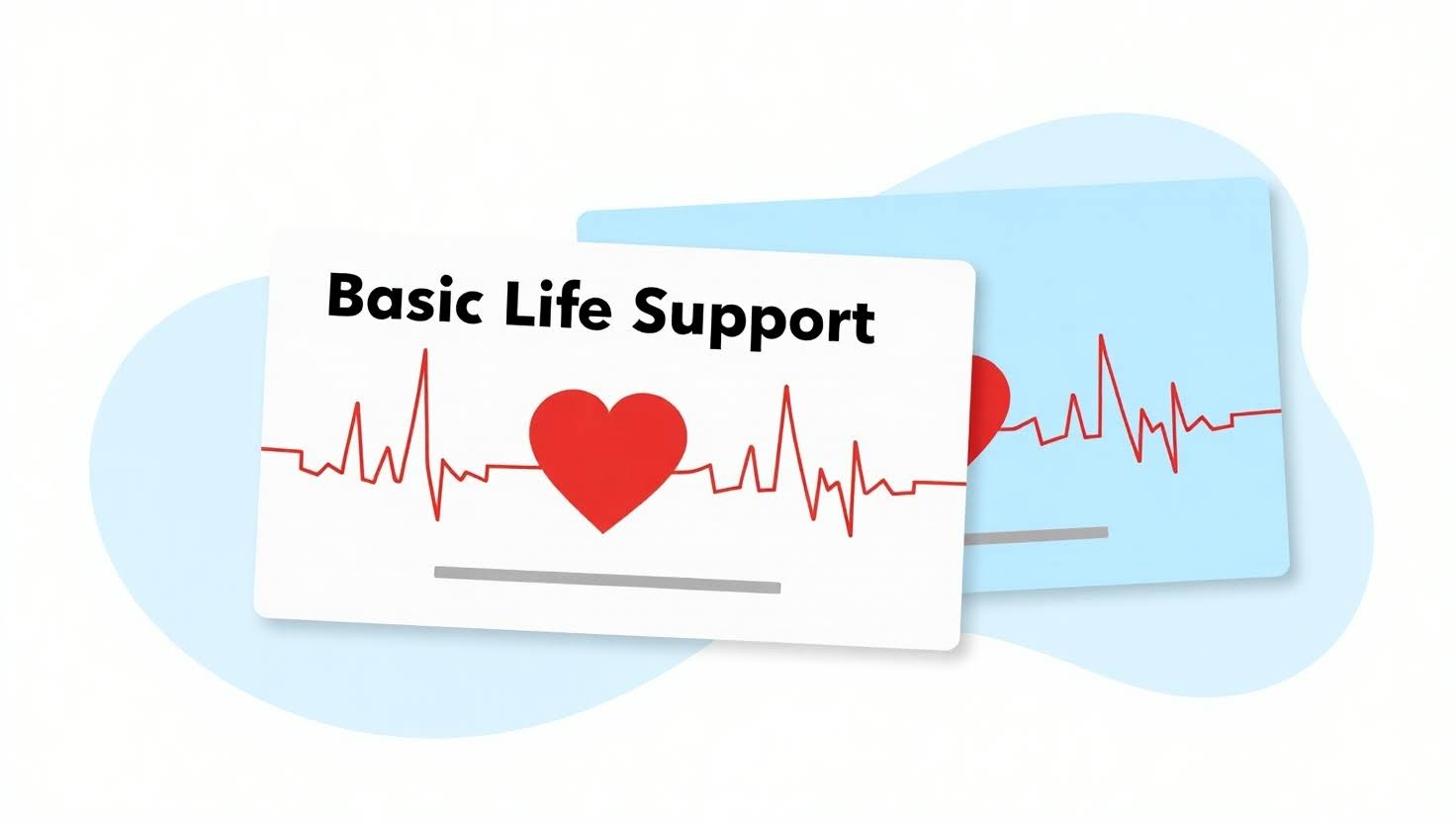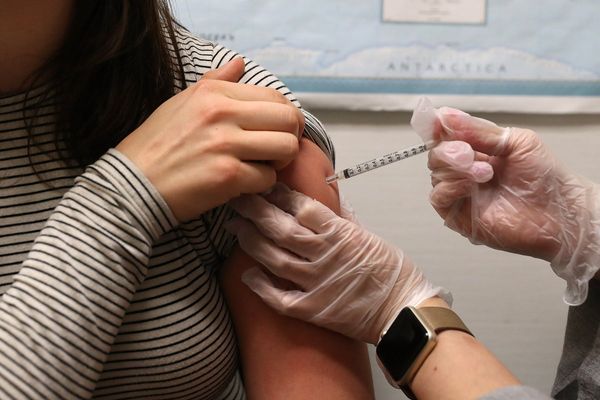
Every year, over 350,000 out-of-hospital cardiac arrests occur in the United States, with nearly 90% of these cases proving fatal. Obtaining Basic life support (BLS) certification equips individuals with essential skills, such as CPR, AED usage, and basic airway management. It enables them to respond confidently to emergencies and potentially save lives.
So, how do you get certified? The first step is understanding what’s involved. BLS training teaches you CPR and how to use an Automated External Defibrillator (AED). These skills help you stay calm and act quickly when every second counts. Whether you’re doing this for your career or just to be prepared, the process is straightforward and worth it.
In this guide, we’ll walk you through everything you need to know to get your BLS certification. By the end, you’ll feel ready to take that first step toward becoming someone who can make a real difference.
What is Basic Life Support (BLS)?
BLS, also known as basic life support, is a set of life-saving responses that aim to address medical emergencies like choking, respiratory failure, or cardiac arrest. These emergency responses focus on basic aids until professional medical help arrives. Some of the major techniques include:
- Maintaining airway patency
- Using Automated External Defibrillator (AED) and Bag Valve Mask (BVM)
- Supporting breathing by giving CPR
- Ensuring proper blood circulation
When you learn these life-saving skills, you are awarded with a credential. It typically shows that the receiver is now trained in carrying out these medical emergency techniques. Hence, basic life support certification allows you to give prompt care in a high-stake environment and significantly improve the victim's chances of survival.
Key Elements of a BLS Certification
Before you begin pursuing the Basic Life Support certification program, look into the key elements that make it a key skill set. Here is a comprehensive list of it:
- Rapid Emergency Recognition
Basic life support certification empowers you to easily recognize life-threatening situations and act on them immediately under medical emergencies.
- Precise Chest Compressions
It teaches you to master high-quality chest compressions. This element is the cornerstone of the Basic Life Support certification program. Here, you learn precise techniques like compression depth and rate. These techniques are key for oxygenated blood to circulate to important organs during CPR.
- Proper Ventilation Techniques
It includes a proper method for delivering ventilation to victims who cannot breathe on their own. In order to deliver artificial ventilation, you get to learn how to use valves, maintain airway patency, and deliver rescue breaths.
- Automated External Defibrillator (AED) Competence
The Basic Life Support certification program also consists of the use of AED. It also teaches you to use AED during infant CPR situations. You tend to gain practical experience with these medical emergency devices designed to restore heartbeats through controlled electric shocks during sudden cardiac arrest.
- Collaborative Teamwork
You will often see healthcare providers working in a team under emergency conditions. BLS training thus provides hands-on experience in effective communication and teamwork to optimize patient outcomes.
- BLS Certification and Renewal Process
Basic Life Support certification cards are typically valid for 2 years. In this 2-year window, this certificate becomes reflective of your potential to give emergency response. It helps expand your knowledge and skills in life-saving techniques. However, you need to renew your certificate before the validity expires. Else, you will have to retake the course which tends to be more extensive than the refresher course.
Benefits of Enrolling in a BLS Certification Course
It is largely known that bystander CPR improves the chances of survival after out-of-hospital cardiac arrest. No wonder! The survival rate of victims increased from 27.5% to 52.9% after BLS training.
Imagine! What's better than providing timely care to victims under life-threatening conditions? Irrespective of your profession, having a BLS is a sign of being a responsible citizen.
Here are some advantages to enrolling in a BLS certification course.
- Improved job outlook: There are a lot of healthcare and emergency response jobs that require Basic Life Support certification. So, you can find new job opportunities in the healthcare industry. Adding it to your resume will differentiate you from other candidates.
- Increased Confidence: BLS certification gives you a sense of medical preparedness. You don't panic and act swiftly, hence boosting your confidence in emergency situations.
- Improved Patient Outcomes: BLS certification allows you to respond immediately and effectively during medical emergencies. It, therefore, positively impacts the survival and recovery rate of victims.
How to Get a BLS Certification?
Basic Life Support Certification courses typically include CPR training. It also includes bleeding control techniques and first aid for burns, poisoning, and shock. You can consider both online and offline. However, when it comes to affordability and convenience, online BLS certification is the most sought-after option for professionals and non-healthcare professionals alike.
Here is a precise overview of how to obtain the Basic Life Support Certification effectively and with ease.
- Enrol in a Reputed Course
Established and reputed healthcare organizations like AHA provide basic life support certificate programs. Ensure that you enroll in such accredited courses only so that your employer accepts the validity of the course.
Though the accredited programs are available both online and offline, you should consider the preferences of your employers. It will ensure that you choose the right certification program, aligning with your career goals.
Once you select the right certification provider, register yourself by filling out personal details and suitable payment methods. Voila! You are ready to complete the certification.
- Attending Practical and Theory Sessions
Online BLS programs are very convenient to access. The study materials become available to you either immediately or within 24 hours of registration. These materials generally include video lectures, practical demonstrations, and theoretical materials. You are required to follow the curriculum as per the instructions given. And the best part is that you can take your time and complete it at your own pace.
- Writing and Passing the Exam
After completing the provided study modules, you need to take the BLS exam. The exam is generally divided into two parts:
- Part 1: A set of multiple-choice questions (MCQs)
- Part 2: Live demonstration where you perform the learned skills on a model or mannequin. These skills generally range from giving CPR to performing airway obstruction relief techniques.
Once you pass the exam, the certification provider grants you the Basic Life Support Certification.
Get your Basic Life Support Certification Today!
In conclusion, BLS training is convenient and accessible for anyone to acquire. Getting certified under BLS showcases your commitment to patient care and community well-being. It effectively equips you to be a proactive bystander when someone needs immediate medical care.
Having a Basic Life Support Certification is not just about advancing one’s career in the medical field. It rather empowers victims in particular and society at large. So, earn this reputed certification online and take one step closer to being a lifesaver today!







